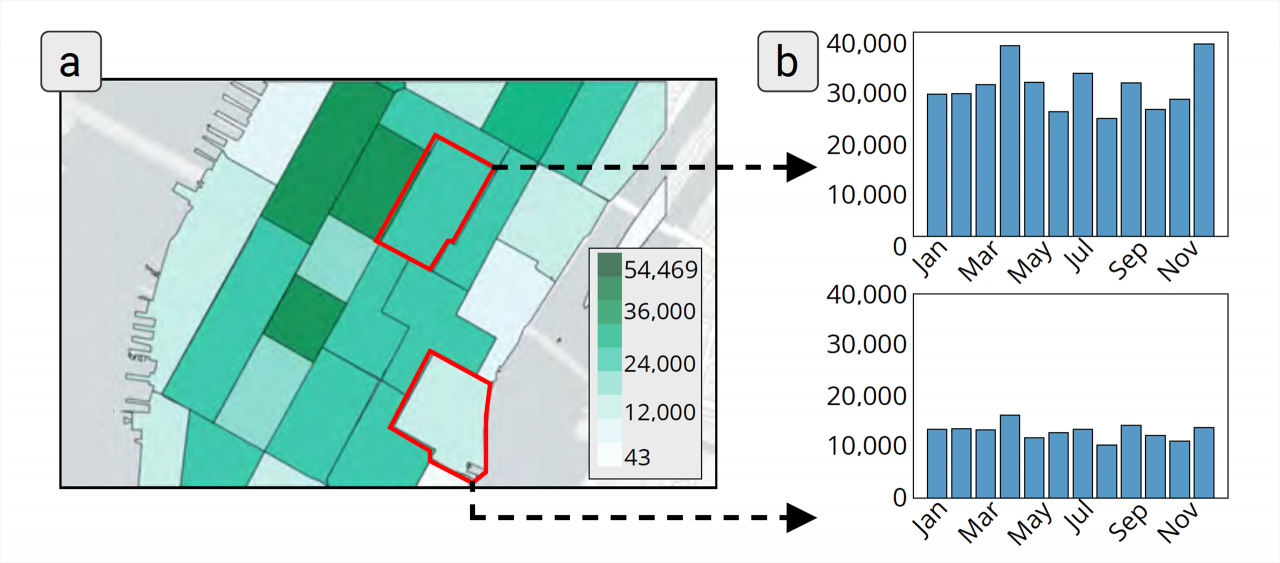|
|
||||||||||||||||||
A Comparative Study of Methods for the Visualization of Probability Distributions of Geographical Data
Authors: Srabanti, S., Veiga, C., Silva, E., Lage, M., Ferreira, N., Miranda, F.
Publication: Multimodal Technologies and Interaction, vol 6, no 7 URL: https://doi.org/10.3390/mti6070053 Probability distributions are omnipresent in data analysis. They are often used to model the natural uncertainty present in real phenomena or to describe the properties of a data set. Designing efficient visual metaphors to convey probability distributions is, however, a difficult problem. This fact is especially true for geographical data, where conveying the spatial context constrains the design space. While many different alternatives have been proposed to solve this problem, they focus on representing data variability. However, they are not designed to support spatial analytical tasks involving probability quantification. The present work aims to adapt recent non-spatial approaches to the geographical context, in order to support probability quantification tasks. We also present a user study that compares the efficiency of these approaches in terms of both accuracy and usability. Keywords: spatial visualization; uncertainty visualization Date: July 13, 2022 Document: View PDF |